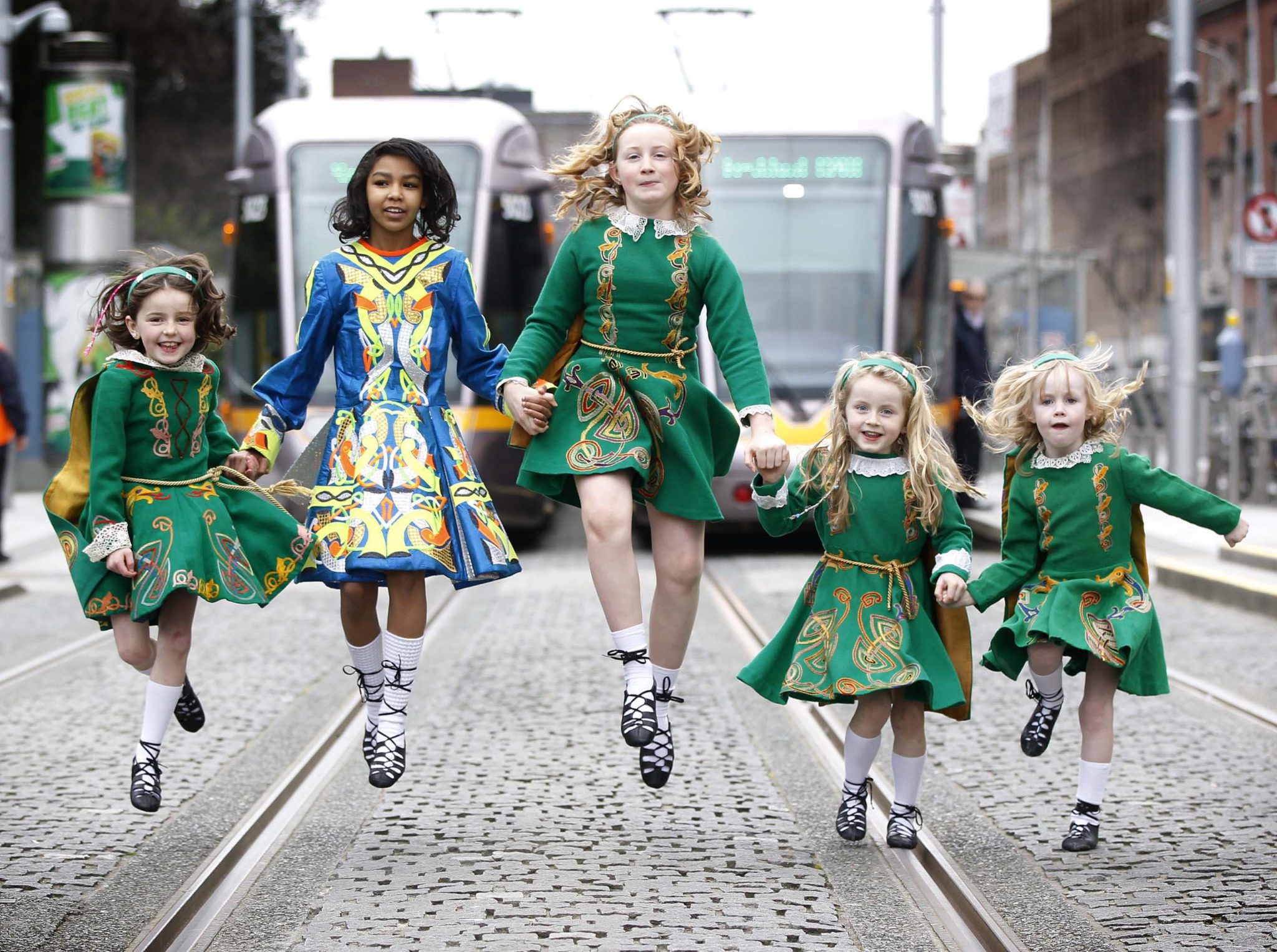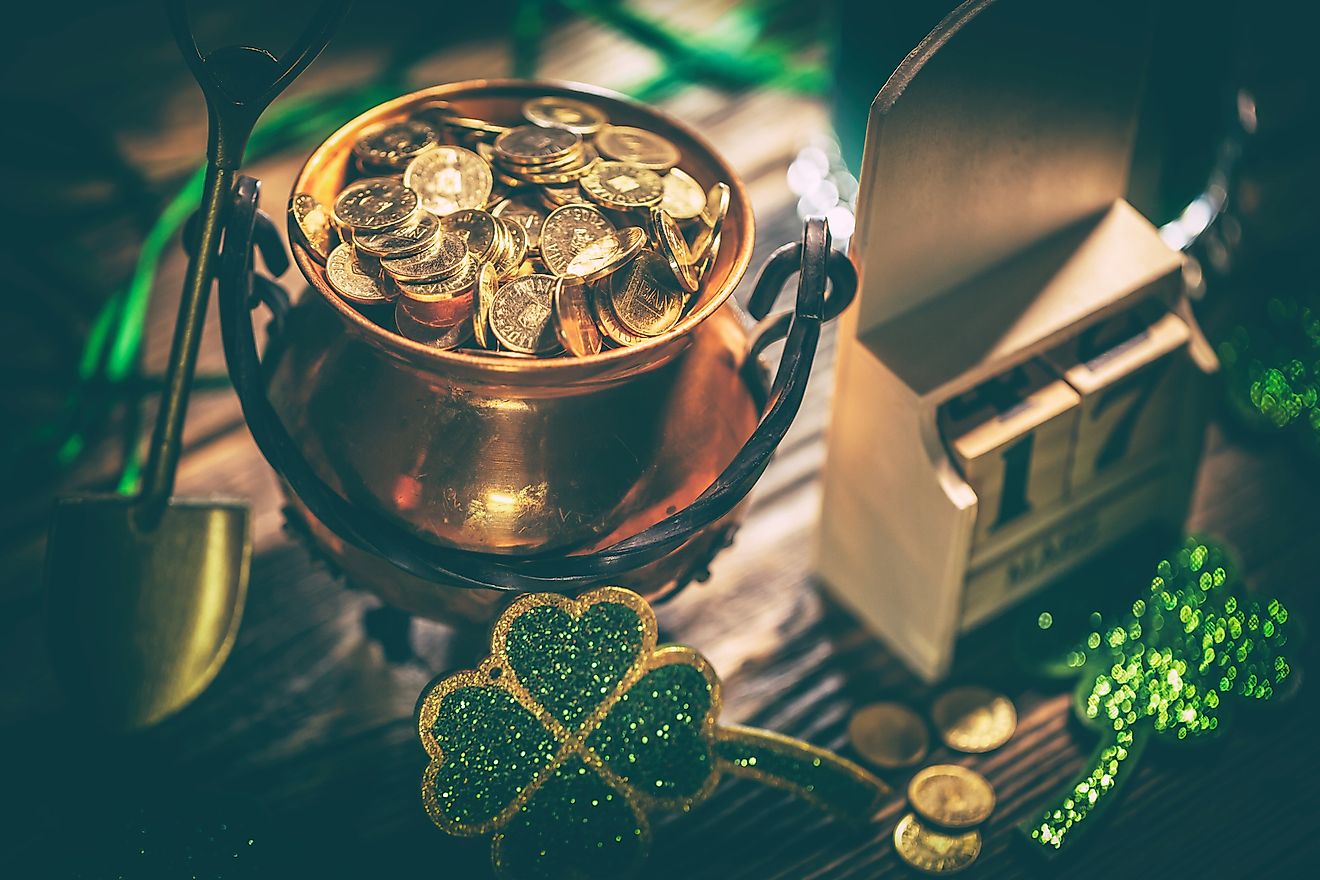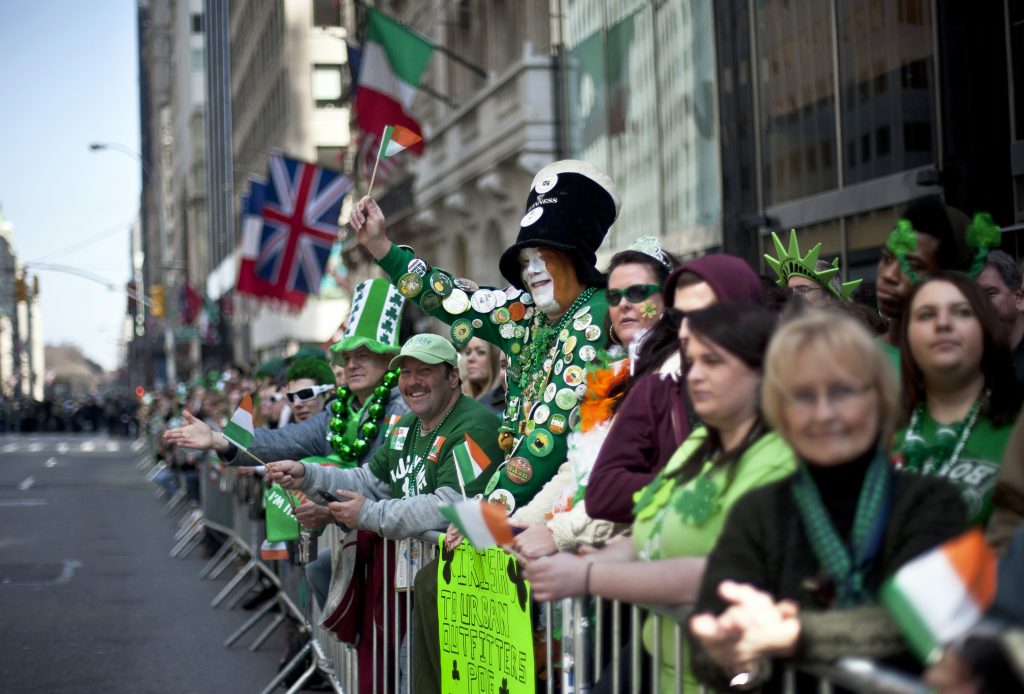Gallery
Photos from events, contest for the best costume, videos from master classes.
 |  |
 |  |
 |  |
 |  |
 |  |
 |  |
If caught, they would have to grant three wishes in order to gain their freedom. Leprechauns became the most famous of the Celtic fairies and are thus closely associated with Ireland and St. Patrick’s Day today. 9. The First St. Patrick’s Day Parade was in the United States A modern-day St. Patrick’s Day parade in New York City. Source Saint Patrick's Day, or the Feast of Saint Patrick (Irish: Lá Fhéile Pádraig, lit. 'the Day of the Festival of Patrick'), is a religious and cultural holiday held on 17 March, the traditional death date of Saint Patrick (c. 385 – c. 461), the foremost patron saint of Ireland. While the day was marked with more of a religious framing and solemnity in Ireland until well into the 20th century, in America it became the cultural and boisterous celebration it is today Monday, March 17 is St. Patrick's Day, celebrating all things Irish in the U.S. and around the world. Cities celebrate with parades, bar crawls and more. St Patrick’s Day has been an official holiday in Ireland since William Redmond proposed a bill of parliament in 1903, but it has been celebrated as a day of revelry, claimed as a day of Why do we celebrate St. Patrick's Day on March 17? Legend has it that Patrick died on March 17. People in Ireland started observing a feast day on March 17 in celebration around the ninth or 10th While the day was marked with more of a religious framing and solemnity in Ireland until well into the 20th century, in America it became the cultural and boisterous celebration it is today St. Patrick's Day was once a solemn religious holiday. Irish culture and heritage experts previously have told USA TODAY the holiday was once a solemn religious day, but it started getting its Every March 17th, the world turns green in celebration of St. Patrick’s Day—a vibrant tribute to Ireland’s patron saint. Parades march through Dublin, shamrocks adorn lapels, and pints of Guinness flow freely. But as the confetti settles in 2025, a quieter curiosity emerges. Who was St. Patrick beyond the festivities? What hidden stories linger beneath St Patrick's Day is a religious holiday that celebrates the life of Ireland's patron saint, St Patrick. It is believed to be the day that St Patrick died in the 5th century. In Ireland, every St Patrick's Day, communities from Belfast to Cork on this national holiday celebrate the patron saint of Ireland through a range of events. Discover the spiritual significance of St. Patrick's Day as we delve into its Christian roots and the legacy of St. Patrick, the patron saint of Ireland. Celebrate March 17 with themes of hope and resilience, reflecting on personal faith journeys while honoring St. Patrick’s teachings and the symbolism of the shamrock. Join the blend of How is St. Patrick’s Feast Day celebrated in Ireland today? St. Patrick’s Day, observed annually on March 17, is both a religious and cultural holiday in Ireland. Traditionally, it was a solemn day marked by attending Mass, as St. Patrick was honored for his contributions to Christianity in Ireland. While St Patrick’s Day was once a “dry holiday” owing to its religious significance, today it is traditionally celebrated with pints of Guinness, cider or some Irish whiskey. A famous custom, known as “drowning the shamrock”, involves dropping a shamrock into the last glass of whiskey and drinking it during a toast to the saint. Why do we celebrate St. Patrick's Day on March 17? Legend has it that Patrick died on March 17. People in Ireland started observing a feast day on March 17 in celebration around the ninth or 10th For more than 1000 years, St. Patrick’s Day has been celebrated in Ireland every year on 17 March. Over the years, the religious holiday commemorating the death of Saint Patrick, the patron NEW YORK (AP) — If it’s March, and it’s green, it must be St. Patrick’s Day. The day honoring the patron saint of Ireland is a global celebration of Irish heritage. And nowhere is that more so than in the United States, where parades take place in cities around the country and all kinds of foods and drinks are given an emerald hue. Every year on March 17, people around the world celebrate St. Patrick’s Day, honoring the patron saint of Ireland. But what started as a religious feast has evolved into a vibrant, global celebration of Irish culture. The origins of St. Patrick’s Day traditions can be traced back to St. Patrick, the patron saint of Ireland, who is credited with bringing Christianity to the Emerald Isle in the 5th century. Initially a solemn religious feast day, the celebration has evolved over the centuries into a day filled with both reverence and revelry. Historically, the celebration of St. Patrick’s Day in Ireland involved a rich tapestry of folk practices, some religious, some more secular. Few of those traditions are maintained in today’s Whether you credit him with banishing snakes, bringing Christianity or giving us a bank holiday weekend, St Patrick's Day is undoubtedly an excellent chance to celebrate our small country.
Articles and news, personal stories, interviews with experts.
Photos from events, contest for the best costume, videos from master classes.
 |  |
 |  |
 |  |
 |  |
 |  |
 |  |